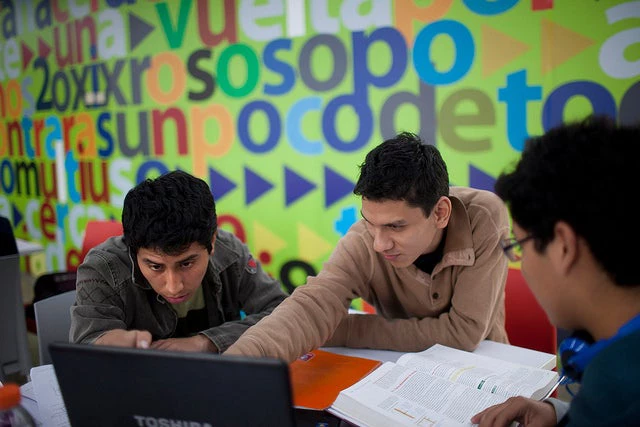
Recently, we reached out to education experts around the world to hear what they considered the most pressing issues facing our sector today. Surprisingly, they all said that little has changed in terms of our most common challenges. What was changing, they agreed, were the innovative ways that the global community has begun tackling them.
Our discussions frequently came back to advances in neuroscience, Massive Open Online Courses (MOOCs), Blockchain, and the consequences of negative population growth—as well as the ways that these phenomena are changing and challenging the way we think about education. Some of these changes have received more attention than others, but we are convinced of their importance—and education stakeholders around the world should be paying attention.
Neuroscience. Since the 1990s, experts have been trying to link neuroscience and education, but only in the last decade or so has there been a consensus that neuroscience has a prominent place in education . In fact, based on neuroscience research, some scientists argue that the way the brain learns and processes information needs to be a paradigm for education reform— specifically for boosting literacy, but also overall learning and cognitive development more broadly.
Reading depends on the ability of the visual system to recognize sets of small objects, like letters, as patterns. Cognitive science tells us that people start to learn with small chunks, such as a letter, then connect these letters into words until the brain recognizes them in the same way the brain recognizes faces. Once this is achieved, then students can read; and only then can they understand and learn.
The tools offered by neuroscience improve our understanding of the links between hearing, processing linguistic sounds, and the development of literacy—and this is increasingly critical to ensuring that children everywhere are learning to read . Tools for teaching literacy based on this new research has already proven to be effective, especially for low-income children. Indeed, emerging information from the field of neuroscience can be leveraged to help ensure that all young people learn to read at the right age.
MOOCs. Massive Online Open Courses have incredible potential. Although there is nothing particularly new about this technology (many universities have been offering on-line courses for decades using a similar technology, such as video lectures), there has been a major shift in terms of the scale involved. Many enthusiastic supporters of MOOCs initially thought that they would replace the traditional model of higher education, provide a cost-effective alternative, and “scale up” higher education.
And while this hasn’t happened, MOOCs still have potential. For example, the Khan Academy provides free, world-class education for anyone, anywhere and more than 100 million people have benefited from courses in about 40 languages on topics ranging from mathematics and computer programming to grammar and art history. MOOCs offered by universities such as Coursera are providing a variety of courses, which now attract more that 23 million students a year. MOOCs are also used to provide corporate training in a cost-effective manner.
This is revolutionary for education practitioners who are looking to expand education access in the developing world. Indeed, research indicates that MOOCs are providing opportunities for people with limited access to education. Developing countries should take note and explore ways to expand access to this tool for their populations.
Blockchain. Though blockchain is not widely used in education, it will be soon. Today our banking transactions, shopping, communications—and almost anything else— can be done online. These online processes are recorded and blockchain technology collects that data into encrypted blocks that can never be changed or modified and throws open the pieces across a global network of nodes or distributed computers (users).
This technology has the potential to innovate the way data is shared between education providers and users, ensuring data integrity and interoperability in a way that will surely benefit the education sector as a whole. Blockchain creates opportunities for decentralization; increases transparency, speed and effectiveness; removes unnecessary intermediaries; reduces costs; and facilitates auditing processes. NGOs are already using blockchain solutions to increase aid effectiveness by developing platforms that enable people anywhere in the world to build a secure identity for themselves. Migrants, for example, have skills or education credentials that they want recognized in their new countries and having this secure and indestructible identity is helping poor and otherwise vulnerable people participate more equally in the global economy.
Consequences of negative population growth. As populations in some countries decline due to lower fertility, an increasing number of better-educated young people are migrating to urban areas. The number of primary school students, though, is decreasing and in many countries, schools are closing and consolidating. In sparsely populated areas, the number of children has decreased even further, and school consolidation is increasing the distance between home and school for many children.
This is disproportionally impacting vulnerable populations, with the potential to undermine equitable access to education. And paradoxically with fewer students in the system, there’s a risk that overall quality will decrease as well, because the system will be less demanding in accepting new students. Second, in a dynamic labor market the older workers will need an agile supply of training for new skills demanded by the global competition. The implication is that countries with a negative population growth will need to identify new incentive structures to maintain students’ and society’s commitment to education. It may also be time to reintroduce multi-grade teaching to deal with the growing numbers of small schools.
Education systems, especially in developing countries, are facing a number of challenges—most pressingly, improving the quality of learning at all levels. And though there are different pathways forward for achieving this goal, we are confident that the four themes we explored here are a great place to start.
Find out more about World Bank Group Education on our website and on Twitter .



Join the Conversation